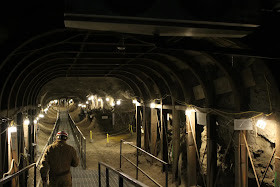So far scientists have categorized exoplanets into the following types: Gas giant, Neptunian, super-Earth and terrestrial.
The planets beyond our solar system are
called “exoplanets,” and they come in a wide variety of sizes, from gas giants
larger than Jupiter to small, rocky planets about as big around as Earth or
Mars. They can be hot enough to boil metal or locked in deep freeze. They can
orbit their stars so tightly that a “year” lasts only a few days; they can
orbit two suns at once. Some exoplanets are sunless rogues, wandering through
the galaxy in permanent darkness.
When we describe different types of exoplanets –
planets outside our solar system – what do we mean by "hot Jupiters,"
"warm Neptunes," and "super-Earths"? Since we're still
surveying and learning about the variety of worlds out there among the stars,
it's sometimes helpful to refer to characteristics they share with planets
we're familiar with in our own planetary system.
NASA/JPL-Caltech
A galaxy of
stars – and planets
Our galaxy, the Milky Way, is the thick stream of
stars that cuts across the sky on the darkest, clearest nights. Its spiraling
expanse contains at least 100 billion stars, our Sun among them. And if each of
those stars has not just one planet, but, like ours, a whole system of them,
then the number of planets in the galaxy is truly astronomical: We’re already
heading into the trillions.
We humans have been speculating about such
possibilities for thousands of years, but ours is the first generation to know,
with certainty, that exoplanets are really out there. In fact, way out there.
Our nearest neighboring star, Proxima Centauri, was found to possess at least
one planet – probably a rocky one. It’s about 4 light-years away – more than 25
trillion miles (40 trillion kilometers). The bulk of exoplanets found so far
are hundreds or thousands of light-years away.
The bad news: As yet we have no way to reach them, and
won’t be leaving footprints on them anytime soon. The good news: We can look in
on them, take their temperatures, taste their atmospheres and, perhaps one day
soon, detect signs of life that might be hidden in pixels of light captured
from these dim, distant worlds.
Exoplanet
discovery – and mystery
The first exoplanets were discovered in the early
1990s, but the first exoplanet to burst upon the world stage was 51 Pegasi b, a
“hot Jupiter” orbiting a Sun-like star 50 light-years away. The watershed year
was 1995. Since then we’ve discovered thousands more.
Size and mass play a crucial role in determining
planet types. There are also varieties within the size/mass classifications.
Scientists also have noted what seems to be a strange gap in planet sizes. It’s
been dubbed the “radius valley,” or the Fulton gap, after Benjamin Fulton, lead
author on a paper describing it. Data from NASA’s Kepler spacecraft showed that
planets of a certain size-range are rare – those between 1.5 and 2 times the
size (diameter) of Earth, which would place them among the super-Earths. It’s
possible that this represents a critical size in planet formation: Planets that
reach this size quickly attract thick atmospheres of hydrogen and helium gas,
and balloon up into gaseous planets, while planets smaller than this limit are
not large enough to hold such an atmosphere and remain primarily rocky,
terrestrial bodies. On the other hand, the smaller planets that orbit close to
their stars could be the cores of Neptune-like worlds that had their
atmospheres stripped away.
Explaining the Fulton gap will require a far better understanding of how planetary systems form.
Variety is a major theme in exoplanet discoveries over
the past quarter century, as shown in this illustration. Most have been
discovered by the "transit" method – watching for the tiniest of
shadows as a planet crosses the face of its star.
NASA/JPL-Caltech
Types of
exoplanets
Each planet type varies in interior and exterior
appearance depending on composition.
Gas giants are planets the size of Saturn or Jupiter, the largest planet in our
solar system, or much, much larger.
More variety is hidden within these broad categories.
Hot Jupiters, for instance, were among the first planet types found – gas
giants orbiting so closely to their stars that their temperatures soar into the
thousands of degrees (Fahrenheit or Celsius).
Neptunian planets are similar in size to Neptune or Uranus in our
solar system. They likely have a mixture of interior compositions, but all will
have hydrogen and helium-dominated outer atmospheres and rocky cores. We’re
also discovering mini-Neptunes, planets smaller than Neptune and bigger than
Earth. No planets of this size or type exist in our solar system.
Super-Earths are typically terrestrial planets that may or may not have
atmospheres. They are more massive than Earth, but lighter than Neptune.
Terrestrial planets are Earth sized and smaller, composed of rock, silicate, water or carbon. Further investigation will determine whether some of them possess atmospheres, oceans or other signs of habitability.
Source: Overview - NASA Science













.gif)
.gif)
.gif)
.gif)
.gif)
.gif)
.gif)
.gif)
.gif)
.gif)

.gif)
.gif)
.gif)
.gif)
.gif)
.gif)
.gif)
.gif)
.gif)
.gif)
.gif)



_in_the_Nepal_Himalayas.jpg)

.gif)
.gif)






.gif)
.gif)
.gif)
.gif)
.gif)
.gif)
.gif)
.gif)
.gif)
.gif)
.gif)
.gif)
.gif)
.gif)
.gif)
.gif)
.gif)
.gif)
.gif)
.gif)